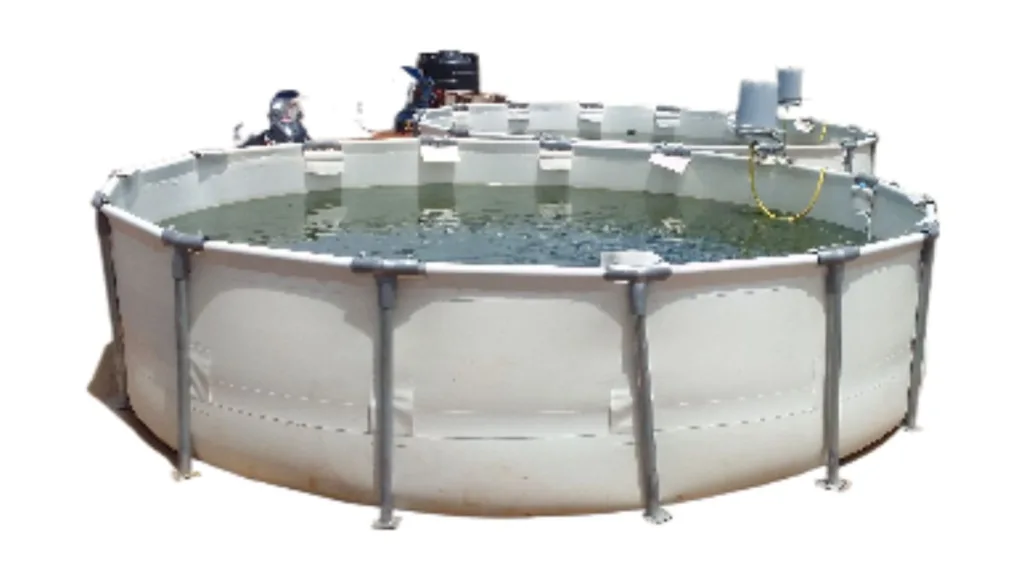- هذا الموضوع فارغ.
- الكاتبالمشاركات
- أبريل 8, 2025 الساعة 5:32 ص #623878

Investing in durable concrete ponds for aquaculture offers significant long-term benefits for fish farming operations. As the demand for sustainable and efficient aquaculture practices continues to rise, farmers are increasingly looking for solutions that ensure healthy environments for aquatic species while minimizing costs and environmental impacts.
Concrete ponds provide a stable and reliable option for farming fish, shrimp, and other aquatic species. By using concrete, farmers can create controlled, durable environments that enhance productivity, reduce operational risks, and promote sustainability.
Investing in durable concrete ponds is a forward-thinking approach that can improve farm profitability and environmental responsibility in the aquaculture industry.
1. Long-Term Durability and Reduced Maintenance Costs
One of the primary advantages of concrete ponds is their exceptional durability compared to other materials like earthen or plastic-lined ponds. Concrete is resistant to wear, erosion, and cracking, which reduces the need for frequent repairs and maintenance.
Once installed, concrete ponds provide a long-lasting solution that withstands the challenges of daily operations, such as water pressure, the weight of fish, and environmental factors like temperature changes and heavy rainfall.
This longevity means that farmers can avoid the recurring costs associated with repairing or replacing ponds made from less durable materials. The reduced need for maintenance also allows farmers to focus more on optimizing aquaculture operations, leading to greater efficiency and productivity.
2. Enhanced Water Quality Management
Concrete ponds offer superior control over water quality, which is essential for the health and growth of aquatic species. The non-porous surface of concrete prevents the infiltration of contaminants from the surrounding soil, reducing the risk of water pollution and disease transmission.
Furthermore, concrete ponds can be designed with advanced filtration systems, aeration devices, and water circulation mechanisms to maintain optimal water conditions.
Consistent water quality management promotes the health of fish and other aquatic species, minimizing the risk of disease outbreaks and ensuring a high-quality yield. In turn, this enhances the overall efficiency and sustainability of the aquaculture farm.
3. Improved Biosecurity and Disease Prevention
Concrete ponds provide a more secure environment for aquaculture farming, helping to mitigate the risk of disease outbreaks. Unlike earthen ponds, which can absorb pathogens and contaminants from the surrounding environment, concrete ponds can be easily disinfected and sanitized.
This is particularly important in preventing the spread of harmful bacteria, viruses, and parasites that can affect aquatic species. In addition, the controlled environment offered by concrete ponds allows for better monitoring and management of health conditions, ensuring that farmers can take swift action in response to any signs of disease.
Investing in concrete ponds therefore contributes to stronger biosecurity measures and reduces the likelihood of financial losses due to disease.
4. Greater Control Over Environmental Conditions
Concrete ponds allow for greater control over environmental variables such as water depth, temperature, and oxygen levels, which directly impact the growth and survival of aquatic species.
With precise control over water conditions, farmers can create the ideal environment for different species at various stages of growth, leading to faster growth rates and higher yields.
Moreover, the durability of concrete enables better insulation against external temperature fluctuations, providing a more stable environment for fish farming throughout the year. This control over environmental conditions can increase production efficiency, reduce stress on fish, and improve overall farm performance.
5. Promoting Sustainability and Reducing Environmental Impact
Investing in durable concrete ponds aligns with sustainable aquaculture practices by reducing the environmental impact of farming operations.
Unlike earthen ponds, which can cause soil erosion, water runoff, and the degradation of surrounding ecosystems, concrete ponds are designed to minimize such risks. Their durable, sealed surfaces prevent contaminants from leaching into the soil and water, protecting local ecosystems and water resources.
Additionally, concrete ponds can be equipped with closed-loop water systems, which recycle water and reduce overall consumption. By promoting water conservation and minimizing environmental harm, concrete ponds support the principles of sustainable aquaculture and contribute to long-term environmental stewardship.
In conclusion, investing in durable concrete ponds for sustainable aquaculture offers numerous benefits for farmers seeking to optimize their operations. From long-term durability and reduced maintenance costs to improved water quality management, biosecurity, and environmental control, concrete ponds provide a reliable foundation for efficient and productive fish farming.
Additionally, these ponds promote sustainability by reducing environmental impacts and supporting responsible resource use. As aquaculture continues to grow as a crucial source of global food production, investing in concrete ponds represents a smart, sustainable choice that ensures both profitability and environmental responsibility in the industry.
Read Also: Reasons why Catfish becomes Restless inside the pond: Signs, Causes and Control
- الكاتبالمشاركات
- يجب تسجيل الدخول للرد على هذا الموضوع.

